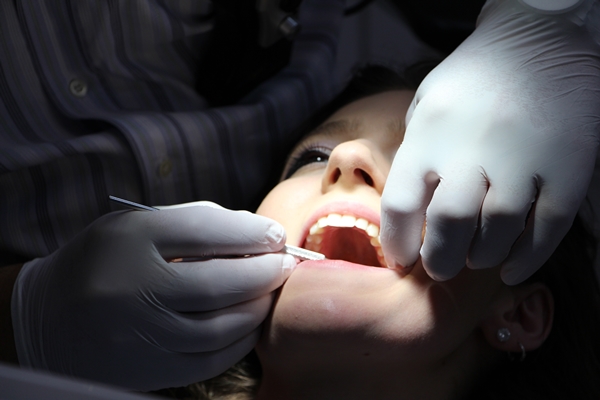27 July 2016. Adding iron oxide nanoparticles to hydrogen peroxide is shown to reduce the build-up of bacterial films on teeth, preventing cavities from forming in lab rats. These findings from a team of dental researchers and engineers at University of Pennsylvania appear in the September 2016 issue of the journal Biomaterials (paid subscription required).
Bacteria can accumulate on teeth forming networks called biofilms that promote the acidic decay of enamel leading to cavities. These biofilm plaques are difficult to remove, with antibacterial treatments showing at best mixed results. A team from the lab of dental medicine professor Hyun (Michel) Koo is trying a different strategy, harnessing the power of hydrogen peroxide, a common and inexpensive antiseptic.
Postdoctoral researcher and first author Lizeng Gao proposed a strategy of releasing highly reactive atoms known as free radicals from hydrogen peroxide to neutralize the biofilm plaque build-up on teeth. In previous work, Gao found that nanoscale iron oxide particles — 1 nanometer equals 1 billionth of a meter — exhibit properties similar to peroxidase enzymes, catalysts found in nature that promote oxidation of hydrogen peroxide, releasing free radicals.
“When he first presented it to me, I was very skeptical,” says Koo in a university statement, “because these free radicals can also damage healthy tissue. But then he refuted that and told me this is different because the nanoparticles’ activity is dependent on pH,” a measure of acidity of a solution. For iron oxide nanoparticles to act as a catalyst first requires an acidic environment. The mouth normally has a pH in the neutral range, thus not activating the hydrogen peroxide. But the presence of biofilms increases acidity in the mouth, which would activate the catalytic iron oxide nanoparticles.
The team includes David Cormode, a radiology and biomedical engineering professor at Penn, who works with iron oxide nanoparticles in imaging, where some forms of these nanoparticles are already approved by FDA. In lab tests, the researchers coated simulated tooth enamel surfaces with Streptococcus mutans biofilms similar to those found in the mouth, and exposed the surfaces to sugar that increases acidity and bacterial activity.
Applying 30-second treatments of iron oxide nanoparticles followed by 30-second treatments of hydrogen peroxide released free radicals, as hypothesized. In concentrations as low as 1 percent or less, the nanoparticle/hydrogen peroxide treatments broke down the biofilm plaques reducing 99.9 percent of the bacteria within 5 minutes, a 5,000-fold improvement over hydrogen peroxide alone.
The researchers then tested the process with lab rats, whose teeth react to Streptococcus mutans similarly to humans. The rats were given 1-minute iron oxide nanoparticle and hydrogen peroxide treatments twice a day for 3 weeks, and then compared to similar treatments of hydrogen peroxide alone. The results show rats receiving the nanoparticle/hydrogen peroxide treatments have fewer and less severe cavities than a similar group with hydrogen peroxide alone, and with no adverse effects on gums or soft tissue in the mouth.
The team finds the results promising, not only the outcomes, but also because of the low concentrations of hydrogen peroxide and small quantities of nanoparticles required. “If you look at the amount you would need for a dose, you’re looking at something like 5 milligrams,” notes Cormode. “It’s a tiny amount of material, and the nanoparticles are fairly easily synthesized, so we’re talking about a cost of cents per dose.”
Read more:
- Bioactive Glass Reduces Decay in Tooth Cavity Fillings
- Dental Implants Found Prone to Fractures
- Anti-Infection Compound Devised for Dental, Wound Care
- Spin-Off Company Develops Drill-Less Tooth Cavity Treatment
- Bio-Gel Designed to Transform into Precursor Tooth Material
* * *


 RSS - Posts
RSS - Posts
[…] Nanoparticles, Peroxide Boost Tooth Decay Prevention […]